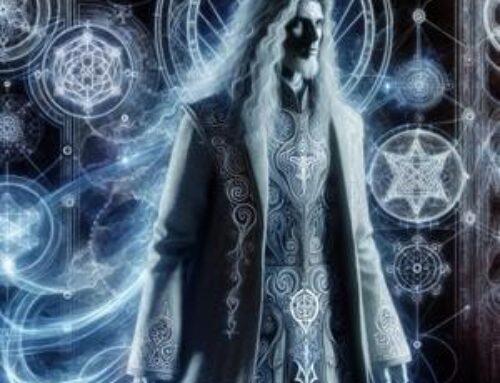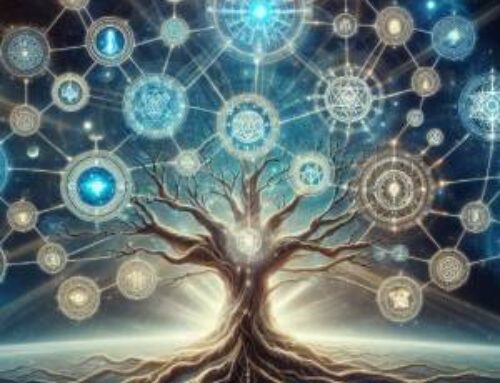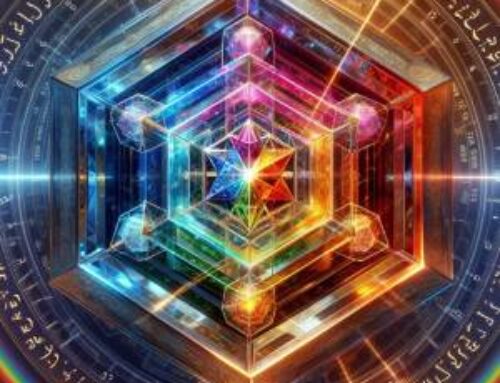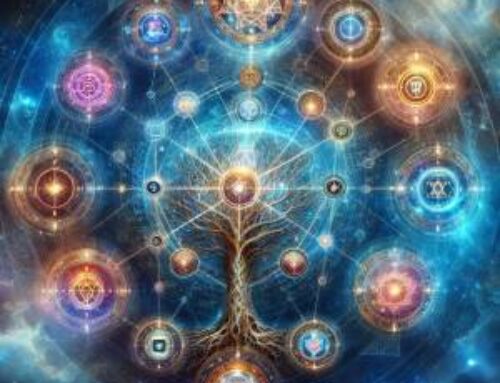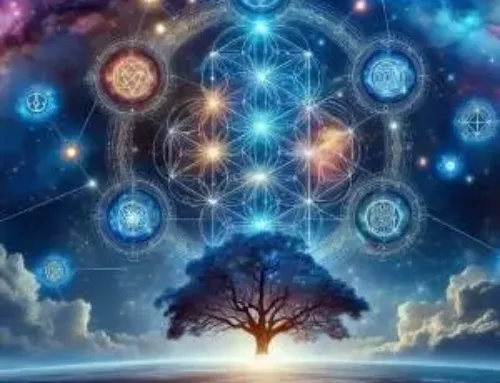Contents
- 1 Introduction to Gnostic Kabbalah
- 2 The Foundations of Gnostic Kabbalah
- 3 The Tree of Life and the Gnostic Journey
- 4 Symbols and Signs in Gnostic Kabbalah
- 5 Practices and Rituals in Gnostic Kabbalah
- 6 The Interconnection of Hermeticism and Gnostic Kabbalah
- 7 Conclusion
- 8 FAQ – Gnostic Kabbalah
- 8.1 1. What is the core of Gnostic Kabbalah. In what ways does it differ from the traditional Kabbalah path?
- 8.2 2. How does Gnostic Kabbalah influence the lives of its followers?
- 8.3 3. What are some ways to delve into the complexities of Gnostic Kabbalah?
- 8.4 4. Can anyone study Gnostic Kabbalah. Is it more suitable for individuals?
- 9 References:
Introduction to Gnostic Kabbalah
Gnostic Kabbalah, an esoteric lineage rooted in the profound depths of Kabbalistic tradition, offers a luminous route for those in quest of spiritual illumination. This mystical framework springs from the ancient currents of Judaic mysticism and melds exquisitely with the arcane doctrines of Gnostic philosophy, forging a distinctive synthesis that probes the essence of the divine and the universal order.
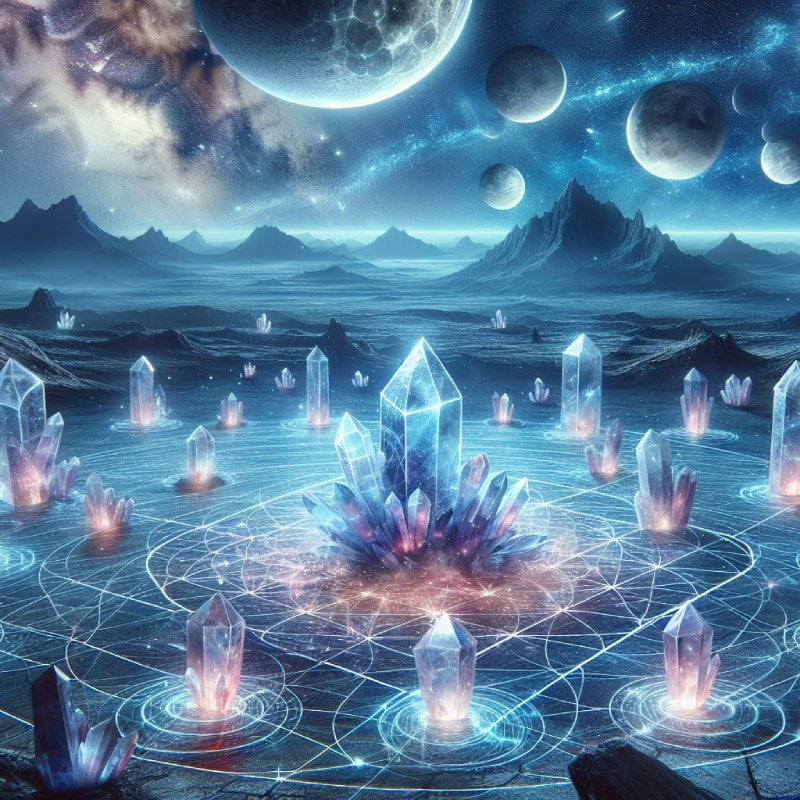
Through the complex motifs of the Tree of Life and the extensive Sephiroth (Sefirot), Gnostic Kabbalah reveals a multi-layered cosmos where each emblem and cipher unlocks esoteric insights into the celestial planes (1). It beckons the adept to rise above the ordinary and commune with the divine through dedicated study, contemplation, and ceremonial rites.
This odyssey through Gnostic Kabbalah transcends mere intellectual accumulation; it is an odyssey of soulful metamorphosis that illuminates the spirit and cleanses the intellect. By exploring this hallowed tradition, adherents are called to unravel the mysteries of their existence and perceive the unity of all creation, shepherded by the eternal sagacity that Gnostic Kabbalah bestows.
The Foundations of Gnostic Kabbalah
Historical Origins and Key Concepts
Gnostic Kabbalah unfolds as a profound quest steeped in age-old mystical doctrines. Sprouting from the fertile soil of traditional Kabbalistic wisdom, this arcane branch weaves together Gnostic principles that advocate for personal gnosis—direct comprehension of the divine, distinct from the exoteric religious rites grounded in faith alone. This bedrock crafts a distinctive avenue wherein seekers are not mere adherents but active explorers in their spiritual awakening.
The Core Philosophy of Unity
At its heart, Gnostic Kabbalah elucidates the oneness of all creation through the emanations from the Ein Sof (Ain Soph), the Infinite, cascading through the dynamic forces of the Sephiroth. These emanations illustrate how the celestial brilliance permeates the material realm, charting a course for the soul’s return odyssey to its divine origin. This metaphysical schema is pivotal for grasping the symbiosis between the divine and the terrestrial.
Distinctive Features Compared to Traditional Kabbalah
Although rooted in traditional Kabbalah, the Gnostic stream sets itself apart by embracing aspects of dualistic cosmologies, such as those depicted in Gnostic scriptures. These cosmologies often portray a cosmos forged by a lesser celestial entity, a demiurge, in stark contrast to the cohesive creation narrative prevalent in orthodox Kabbalistic ideology. Appreciating this variance is essential for navigating the expansive metaphysical landscapes in which Gnostic Kabbalah dwells.
The Tree of Life and the Gnostic Journey
Mapping the Divine Landscape
The Tree of Life anchors as a quintessential emblem in Gnostic Kabbalah, symbolizing the cosmic structure and the ascendant spiritual path. Each nodal point (Sephirah) on the tree delineates a specific divine energy or attribute, furnishing seekers with an intricate blueprint for both personal and cosmic evolution. This allegorical chart is pivotal for meditation, reflection, and ultimately, encountering the divine essence.
The Tree of Life also relates to the mitigation of the Tree of the Knowledge of Good and Evil, with the kingdom or Schechinah representing the material world affected by divine mercies (2).
The Path of Return
In Gnostic Kabbalah, the Tree of Life transcends a mere symbolic outline; it becomes a vital conduit facilitating the soul’s pilgrimage back to its inception. Through meditation and ritualistic practices, adherents ascend the tree, assimilating the divine qualities of each Sephirah into their essence. This ascent is as much about inner metamorphosis as it is about communion with the divine, mirroring the Gnostic valorization of experiential insight.
Intersections with Gnostic Themes
This spiritual schema deeply echoes Gnostic motifs of enlightenment and emancipation from the worldly deceptions. As practitioners traverse the tree, they experience a Gnostic revelation, recognizing the unity of light and shadow and the fallacy of separation. These realizations are crucial for attaining Gnosis—spiritual emancipation, which epitomizes the ultimate pursuit of Gnostic Kabbalah.
Symbols and Signs in Gnostic Kabbalah
The Profound Symbolism of the Sephiroth
In Gnostic Kabbalah, the Sephiroth are not merely facets of divine expression but also represent a sophisticated network of symbolic routes for both personal and universal enlightenment. Each Sephirah (Sefira) illustrates a distinct divine emanation, such as wisdom (Chokmah), understanding (Binah), and beauty (Tiphareth). These icons are meditative focal points where practitioners engage with these divine attributes, weaving them into their spiritual fabric.
The Significance of the Ouroboros and Other Gnostic Symbols
Apart from the Tree of Life, Gnostic Kabbalah embraces a myriad of symbols from ancient esoteric traditions, including the Ouroboros—a serpent devouring its own tail, emblematic of the universe’s eternal cycle and the soul’s quest for enlightenment. Additional symbols like the pentagram and the hexagram expand the esoteric vista of Gnostic Kabbalah, providing deeper interpretative layers and tools for mystical exploration.
Utilizing Symbols for Transformational Work
Symbols in Gnostic Kabbalah transcend contemplative use, playing active roles in rituals and daily spiritual exercises. These emblems facilitate the channeling of divine forces and support transformative undertakings. Whether forging talismans, engaging in meditative visualizations, or conducting ceremonial magic, each symbol acts as a portal to profound spiritual truths and a step forward on the path to Gnosis.
Practices and Rituals in Gnostic Kabbalah
Rituals of Invocation and Ascension
Ritualistic practice is vital in Gnostic Kabbalah, offering structured approaches to divine interaction. Rituals typically involve invoking sacred names, employing symbolic artifacts, and reenacting scriptural tales that reflect the soul’s ascension. These ceremonies aim to synchronize the practitioner’s energies with universal dynamics, deepening the communion with the divine oneness.
Meditation and Contemplative Techniques
Meditation in Gnostic Kabbalah involves dynamic engagement with the energies and symbols of the Sephiroth. Through structured visualizations and deep contemplation, individuals navigate spiritual dimensions, each linked to different aspects of the Tree of Life. This meditative traverse, often envisioned as an ascent through the Tree, progressively deepens the practitioner’s union with the divine essence.
The Role of Sacred Texts and Divine Languages
Essential to Gnostic Kabbalah are sacred writings, especially the Zohar and other Kabbalistic texts, which are not only studied but also ritually chanted, resonating with divine frequencies. Hebrew and sometimes Aramaic, used in these texts, are considered potent, with each glyph and phrase believed to emit specific cosmic energies impacting both spiritual and material planes.
The Interconnection of Hermeticism and Gnostic Kabbalah
Hermeticism and Gnostic Kabbalah converge philosophically, both advocating a cosmology of divine interconnectedness. Hermetic maxims such as “As above, so below” profoundly echo through Kabbalistic teachings that depict the divine and earthly realms as reflections through the Tree of Life.
Practical Synergies in Mystical Practices
Adherents of Gnostic Kabbalah often blend Hermetic principles into their mystical practices, employing astrological alignments and alchemical symbolism to augment their Kabbalistic insights. This integration fosters a comprehensive mystical approach that elevates both the understanding and the experience of the divine.
Influence on Modern Esoteric Traditions
The fusion of Hermetic and Gnostic Kabbalistic principles has profoundly impacted contemporary spiritual and occult disciplines. This synthesis is visible in modern theosophical movements, ceremonial magic circles, and prevalent New Age spiritualism, where these venerable wisdoms continue to resonate and evolve.
Conclusion
Gnostic Kabbalah provides a deep and transformative spiritual pathway that weaves the mystical doctrines of traditional Kabbalah with the profound Gnostic perspectives on divinity and existence. This esoteric tradition is rich with symbols, rituals, and philosophical teachings that escort the seeker on their ascent from the earthly to the celestial.
At its core, Gnostic Kabbalah centers on enlightenment through direct, personal communion with the divine, known as ‘Gnosis’. It advocates for an exploration that transcends mere intellectual grasp, encompassing meditative practices, contemplative rituals, and a profound, experiential engagement with the sacred energies of the cosmos. The traversal of the Tree of Life not only delineates the architecture of the universe but also reflects the individual’s internal voyage towards unity with the supreme origin.
Enter the Path of Light
For those captivated by the enigmas of Gnostic Kabbalah, the path is as enriching as it is demanding. The Hermetic Academy provides courses, materials, and a fellowship of peers that bolster your spiritual growth. Engaging with this community can offer mentorship, enhance your comprehension, and link you with a network of practitioners who share your enthusiasm for the esoteric arts.
“So, understand the Light [He answered], and make friends with it” (3).
FAQ – Gnostic Kabbalah
1. What is the core of Gnostic Kabbalah. In what ways does it differ from the traditional Kabbalah path?
A: Gnostic Kabbalah stands as an offshoot deeply embedded in the roots of Kabbalistic wisdom. It weaves together the insights of divine connection called Gnosis, with the well established teachings of traditional Kabbalah. This spiritual journey deviates from the paths by valuing spiritual encounters and intuitive understanding over scholarly study of sacred texts thus nurturing an inner quest for enlightenment and profound mystical understanding.
2. How does Gnostic Kabbalah influence the lives of its followers?
A: For adherents Gnostic Kabbalah serves as an illuminating beacon that enhances their consciousness balances their emotions and sharpens their perceptions. By engaging in disciplined rituals meditative reflections on the Tree of Life and actively incorporating Sefirotic energies practitioners establish a link between their experiences and spiritual aspirations. This enriches their day to day lives, with spiritual insights.
3. What are some ways to delve into the complexities of Gnostic Kabbalah?
A: Exploring Gnostic Kabbalah involves an approach comprising exploration and practical mystical engagement. Engaging in programs, like the ones provided by the Hermetic Academy is crucial. These programs offer a roadmap through the teachings, guided by experienced mentors and shared experiences with a community of like minded individuals creating a fertile ground for deep immersion in the world of mystical arts.
4. Can anyone study Gnostic Kabbalah. Is it more suitable for individuals?
A: Gnostic Kabbalah welcomes all who are intrigued by its mysteries yet mastering its principles and practices often requires expert guidance and access to comprehensive resources. Joining an institution such as the Hermetic Academy ensures that students have the necessary education, tools and support, from fellow seekers to navigate this intricate but fulfilling spiritual journey effectively.
References:
(1) Rubenstein, E. (2020). The Tree of Life: The Kabbalah of Immortality. Hermetic World, Paphos.
(2) Mathers, S. L. M. (1887). The Kabbalah Unveiled. London: George Redway.
(3) Ficino, M. (1471). Corpus Hermeticum. Florenz.

